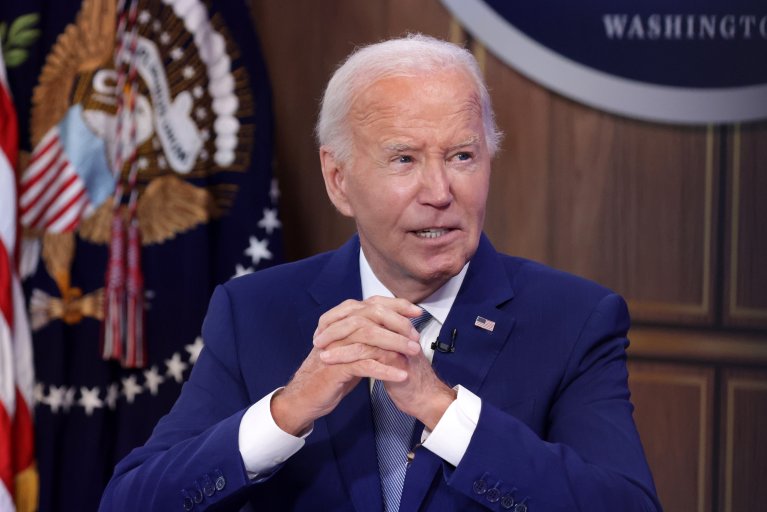The finalists for the National Principal of the Year award this year hail from South Carolina, Massachusetts, and Michigan. All three principals share a common goal of bringing up their schools’ graduation rates. They also share concerns around stubborn chronic absenteeism rates in their districts, and the persistent challenges of social media overuse and its impact on students’ mental health.
The three finalists, chosen by the National Association of Secondary School Principals from nominations from 50 states and the District of Columbia, have more than three decades of school leadership experience between them. Among other attributes, NASSP CEO Ron Nozoe said their “ability to cultivate leadership at all levels” was a key indicator of their success as principals.
This year’s award winner will be announced Oct. 18. (The award is meant for middle and high school principals; elementary principals are recognized separately through their own association.)
In interviews with Education Week, the three principal finalists stressed the importance of building the right school culture, in which both teachers and students can feel heard and represented in school-wide discussions.
Here’s what the finalists said about their approach to leadership.
Jon Wilcox, principal, Petoskey Middle School, Petoskey, Mich.
Wilcox started his teaching career in a “tiny Alaskan school,” where he doubled as the dean of students to help the high schoolers meet their graduation requirements. This early experience, Wilcox said, shaped his attitude toward student—and teacher—engagement.
“I realized that school or academic work isn’t always the most important thing,” he said. “It’s how you treat people. If you can get students to buy in and trust you [as a teacher], that’s how you can get them into academics.”
Wilcox said he relied on this trust to keep students engaged in school, despite frequent teacher turnover.
Wilcox is now in his 10th year as the principal of Petoskey Middle School. In addition to engaging students, Wilcox has also created spaces to make parents and teachers part of important conversations in his school.
For parents, Wilcox started a monthly meeting called “Hot Topics for Parents of Teens” to introduce parents to challenges that most teenagers commonly experience.
“We provide information on ADHD, risk-taking behavior, screen time. We take them through how teenage brains develop,” said Wilcox.
For teachers, Wilcox has a set of six teacher leaders from different content areas who also serve on his school improvement team. Wilcox said these leaders are both advocates for their colleagues as well as a conduit for him to communicate with teachers.
“[Through the PLC leaders], teachers are willing to tell me when something isn’t right, and they trust that I’m going to listen,” he said. “They also understand that I’m not going to be able to fix everything.”
Andrew Rebello, former principal, Diman Regional Vocational Technical High School, Fall River, Mass.
Rebello has spent close to 10 years in school and district administration. He just finished up a four-year term as the principal of Diman Regional Vocational Technical High School in Fall River, Mass., where he helped boost the graduation rate from 95 to 98 percent by creating “safety nets” for his students. He’s now the assistant superintendent of the Bristol-Plymouth Technical School in Taunton, Mass.
The safety nets he created included using data to determine which students were struggling either academically or from mental health issues, and then raising grant funds to bring in interventionists to help them. Diman also invested in an on-site physician in collaboration with the local community health center. The physician could cater to students who would otherwise miss school because of their health.
Having a physician on-site, said Rebello, contributed to a 7 percent reduction in chronic absenteeism across the approximately 1,450 students who attend Diman, over his 4-year tenure. Chronic absenteeism is most commonly defined as missing 10 percent of school days for excused or unexcused reasons.
Rebello’s passion to connect all students with a purpose led him to encourage “choice programming.” Students can choose from a range of career and technical programs, which impart job-ready skills, like communication, critical thinking, and how to hold a conversation.
“Many students are taking advantage of getting into careers right away. Coming out of a technical school like ours, more than ever, parents want their kids to have the option of getting right into careers and jobs after high school,” Rebello said.
Tracie Anderson Swilley, Fairfield Central High School, Winnsboro, S.C.
Anderson Swilley started at Fairfield Central High as the principal in 2013, and almost immediately felt the need to change the school culture. One of the first things she did was try to boost her students’ confidence.
“We are in a very rural area,” she said. “Every day I do an affirmation [with the students] and emphasize that their ZIP code doesn’t decide their abilities.”
Anderson Swilley created an after-school tutoring program, and she paired this with other supports for students, like the option to catch up with classes online, college application day, and parent nights at the school where families can get help in applying for federal financial aid. Anderson Swilley also helps parents, who may not have completed high school themselves, to help their children stay on track for graduation.
Anderson Swilley’s efforts have borne fruit—the graduation rate for the school has gone up from below 70 percent to an average of 80 percent over the last two years during her tenure as principal.
The finalist principal also doubles up as a mentor for teacher leaders and assistant principals who want to climb the school administration ranks. For instance, she pairs assistant principals and teachers with her school’s testing coordinator so these future leaders can get hands-on experience with planning and implementing tests.
Anderson Swilley said her own journey in school leadership motivated her to assume a mentor’s role.
“When I started, I was the youngest principal in the district and a young African American female,” she said. “Leading a high school was normally a male-dominated occupation. Someone helped me get here. Now, I want to help others.”
Disclaimer: The copyright of this article belongs to the original author. Reposting this article is solely for the purpose of information dissemination and does not constitute any investment advice. If there is any infringement, please contact us immediately. We will make corrections or deletions as necessary. Thank you.






